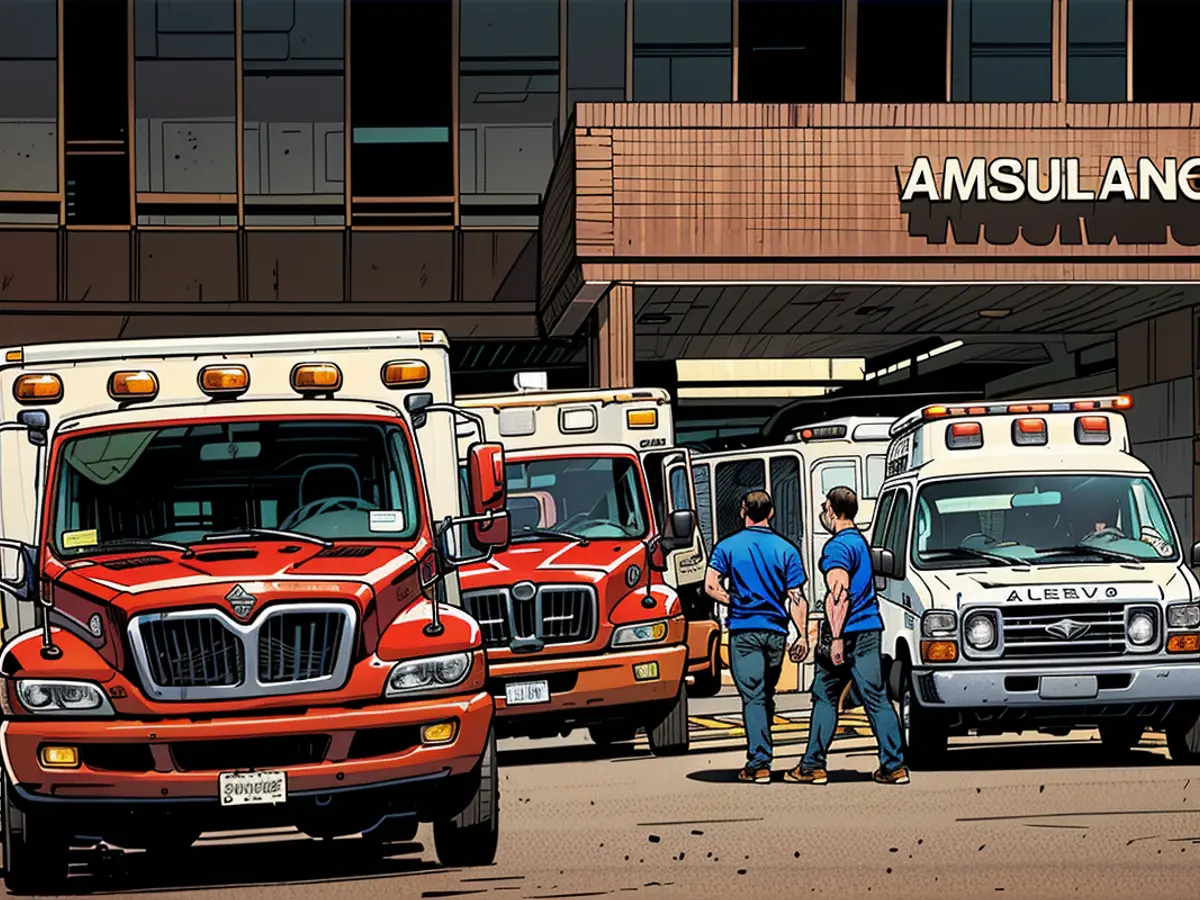ER visits for heat-related illnesses spike — and hard-hit places aren’t always the hottest
According to the CDC’s map, the regions hardest hit by heat illnesses are not always the ones seeing the highest temperatures.
While temperatures have soared to 100 degrees and even beyond across much of the South and Southwest, the states seeing the highest numbers of heat-related ER visits are in the Northeast, Mid-Atlantic, Midwest, and Mountain west, where temperatures have been in the 80s and 90s. But the heat is much more unusual, especially in mid-June, for these locations, trending well above historical averages.
On Saturday, for example, when the heat was reaching a climax in the northeast and mid-Atlantic regions, hospitals in more than two dozen states across six regions reported “extremely high” rates of heat-related emergencies despite temperatures hovering in that lower range. The CDC defines “extremely high” as being in the top 5% of busiest days for heat-related illnesses over the last five years, from 2018 through 2023.
Hot buildings, inexperience put people at risk
CDC health scientist Claudia Brown says that’s because built environments in those areas aren’t designed to deal with heat and people’s bodies aren’t as used to handling high temperatures.
“So in these more northern regions, for example, there tends to be less prevalence of air conditioning in the homes,” said Brown, who works in the Climate and Health Program at the CDC’s National Center for Environmental Health. “So you may not have as high of temperatures as you have in, say, Arizona, but you have a higher health impact because they don’t have, necessarily, the infrastructure in place to deal with that heat.”
With climate change increasing both the number and intensity of heat waves, the CDC earlier this year launched a new heat risk tool where people can look up their ZIP code and see a heat forecast and recommendations to stay safe.
Dr. Cheyenne Falat works in the emergency department at the University of Maryland in Baltimore, a city that declared a code red heat alert over the weekend and opened cooling stations for residents.
“We have seen some pretty significant cases of heat stroke and other heat illnesses coming in over the past few weeks, not just the past few days,” said Falat, who also specializes in environmental medicine. She’s bracing for more.
In Baltimore, where there are high rates of substance use disorders, people can get into trouble if they take drugs and pass out in a car with no one around. Other patients have been older adults who live in homes without air conditioning, outdoor workers, and people who underestimate the heat when they head outside for a workout.
Falat said heat is a serious health threat Americans are just learning how to grapple with.
“Heat waves as a natural phenomenon kill more people, on average, than any other extreme weather event,” she said.
Staying safe in extreme heat
Dr. William Brady, who works in the emergency department at the University of Virginia Health System in Charlottesville said he thinks inexperience has a lot to do with it, too.
“You know, if you live in New Hampshire, you’re used to really not dealing with terribly high periods of heat,” Brady said. “You don’t think that way, that I have to be careful with the heat.”
Brady said their ER is seeing an uptick in cases of heat exhaustion, usually in people who work or exercise outdoors. They come in with “nausea, vomiting, headache, that sort of thing.”
So far, he says, he hasn’t seen any cases of heat stroke, which can be life-threatening. Heat exhaustion can progress to heat stroke, where patients have a throbbing headache, a rapid heart rate, high fever, as well as neurological symptoms like confusion. They may also faint or pass out.
Brady said he’s also seeing more people with underlying health conditions that put them at greater risk from climbing temperatures such as emphysema, heart failure and diabetes.
“We’re definitely seeing more patients that are coming in just not tolerating the heat,” he said.
Get CNN Health's weekly newsletter
- Sign up here to get The Results Are In with Dr. Sanjay Gupta every Tuesday from the CNN Health team.
With climate change driving longer, ever hotter waves of high temperatures, Americans are on a steep learning curve when it comes to heat.
“We know that heat is uncomfortable when temperatures and humidity reach a certain height,” Brady said. “But we’re not really used to being threatened by it the way other parts of the world have had been.”
Brady recently attended a medical conference in Taiwan and took a class to learn how to manage large crowds and mass gatherings during periods of high heat, to cut down on the risk of heat injury.
“This is a potentially new issue that were beginning to face,” Brady said. “And we need to pay attention to it because it is exceedingly dangerous.”
- Built environments in northern regions may not be designed to handle high temperatures effectively, which increases the health impact of heat waves even when temperatures are lower compared to warmer regions.
- The CDC's new heat risk tool allows individuals to look up their ZIP code and receive a heat forecast and safety recommendations, as addressing heat-related illnesses becomes an essential part of preparedness amidst climate change.








